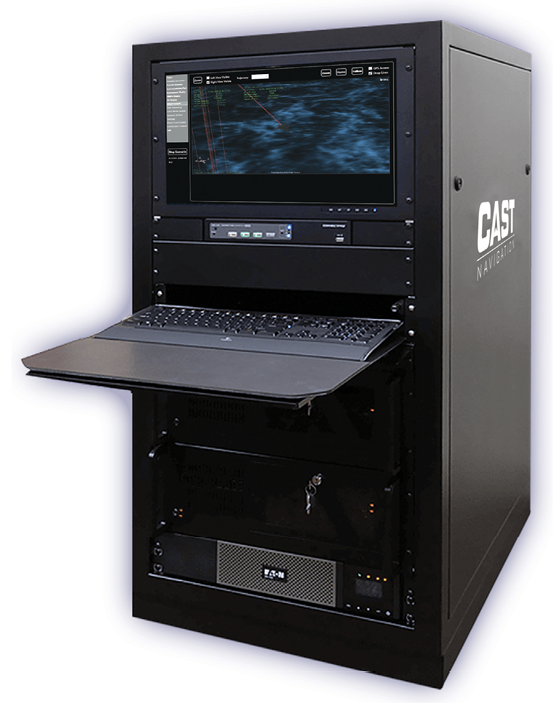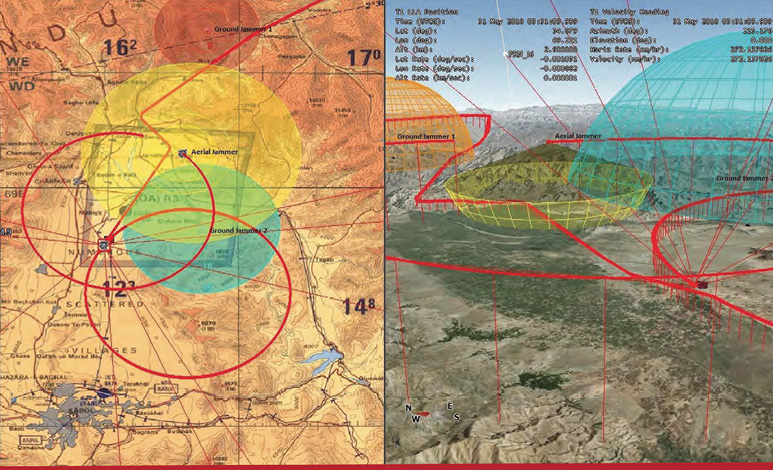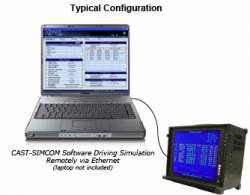CAST has built a long list of faithful clients, working with them to develop custom software and hardware and producing many unique tailored innovations.
This year, CAST Navigation celebrates its 40th anniversary of delivering powerful GNSS/inertial simulation systems to a range of clients across military and commercial PNT sectors, helping them make the decisions necessary to refine and improve their products and processes. This has been the company’s sole focus throughout its history: developing customized perfection in the single area of GNSS simulation.
The company started in 1981 and from the outset employed engineers with experience in both inertial technology and GPS receiver design. Founders Dick Gibson, a legendary GPS pioneer and educator, George Gutheim and John Clark, Sr. quickly established a reputation for thought leadership and powerfully accurate testing tools. From an early focus on aviation, they expanded to produce embedded GPS/INS (EGI) integration tools, diagnostic tools and support equipment, controlled reception pattern antenna (CRPA) testing and more.
Over the years, CAST has built a long list of faithful clients, working with them to develop custom software and hardware. CAST’s strong R&D initiatives have produced many unique software and hardware innovations, from helping military clients land UAVs on moving aircraft carriers to testing GNSS systems in commercial land vehicles and aircraft.

MODULAR DESIGN
CAST has regularly delivered some very large systems, custom tailored for its clients’ product development labs. They are modularly designed so that clients can pick and choose the options they need, “similar to a Lego set,” says VP John Clark, Jr. with a smile.
An early milestone in company history was the development of a software simulation program for Kalman filter designers, called NavSim. The Australian Air Force approached CAST, looking for a way to simulate in their labs. CAST modified NavSim for their needs; that was the very first CAST simulator. To do so, the company adapted a satellite chassis simulator by Stanford Telecommunications, a pioneering company in the industry, founded by people largely responsible for the design of GPS signals.
“We came to an agreement,” recalls Clark. “We used their generator. They built an interface into it so CAST could send digital data and produce RF signals. It was two racks, three feet high, a dynamic GPS simulator that did 5 channels.”
“CAST wrote all the software to generate the pseudoranges and supplied it to the 7200’s hardware. It produced L-band signals from that. CAST was the first commercial company to produce that software.”
After the company integrated the STeL generators for a period of time, it contracted with Rockwell, who had built a signal generator card that could be put into a PC and generated a complete 10-satellite GPS set of data. “We had them custom-design a control board, to enable CAST to properly drive their signal generator card and control the power levels of each satellite.”
Lou Pelosi, another VP with 25 years of experience at CAST, picks up the story from there. “We used those cards for a number of years. In 2005 we developed our own signal gen card that is FPGA-based. It’s CAST-designed, CAST-manufactured.”
“One of the lessons we learned with Rockwell cards: we can do more than one trajectory at a time, we can simulate trajectories of more than one vehicle. We’ve also learned how to do multiple vehicle IMUs based on those same lessons. It taught us how to build our software and our systems in a modular fashion. We can now drive multiple vehicles with phased array multiple element antennas. We could never do this today without learning those lessons from the past.”
“We now manufacture our own inertial interface card. We can drive almost everybody’s IMU using our own card.”
JAMMING AND SPOOFING
The company naturally focuses on both GPS jamming and spoofing, meeting the urgent needs of its customers. Its systems can drive multiple IMUs and EGIs. “We also have the capability to connect multiple systems together, to drive a whole fleet of navigators. That’s a pretty big deal.”
CAST systems are very stable, requiring minimum calibration and minimum warmup time.
Increasingly, customers need specific jamming waveforms to fulfill their needs. CAST has the ability to deliver larger systems to drive multiple navigators, with each navigator using a CRPA antenna, and each output from each of its EGI systems coherent to one another.
THE FUTURE
The trend they see and are actively pioneering is the production of bigger systems, capable of driving multiple IMUs and multiple CRPAs simultaneously. The custom, modular approach is necessary for customer requirements in highly complicated laboratories. CAST hands over a system that is both highly developed yet able to be further customized within the customer’s own lab.
“There’s a lot of stuff they don’t tell us. These guys are developing next-gen fighters and bombers, both manned and unmanned,” says Clark.
“We can customize our interfaces to whatever anybody decides to build into their box,” he concludes. “We build our own IMU and GNSS cards, we have full control, they’re all built on FPGA.”
“We’ve learned to be flexible under different conditions and difficult conditions.”






